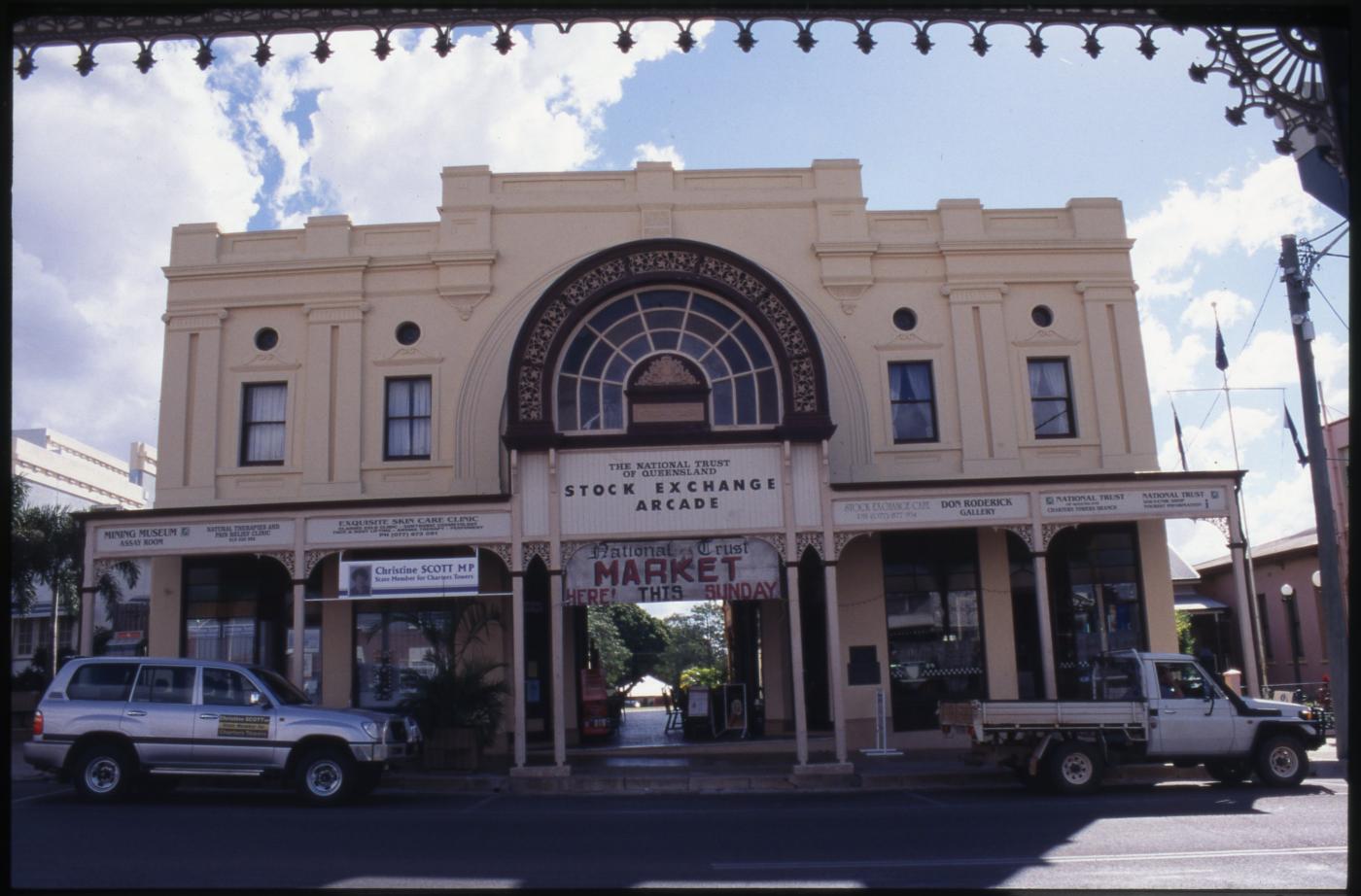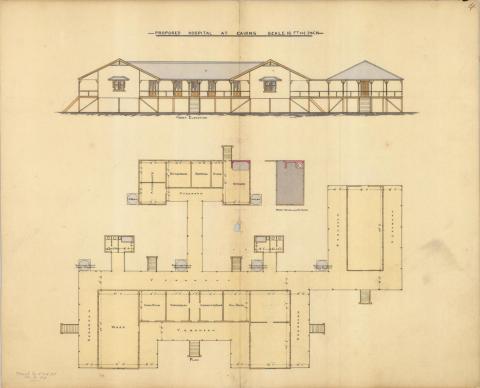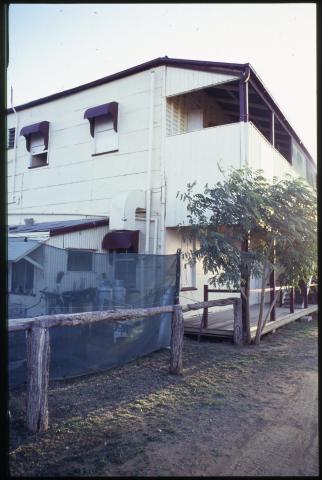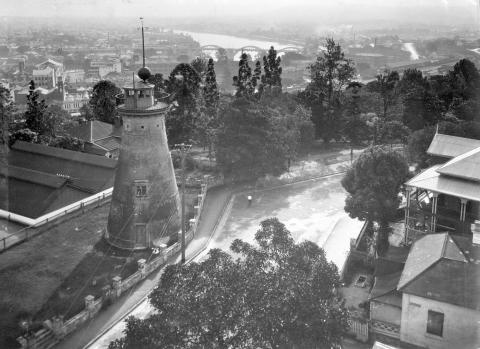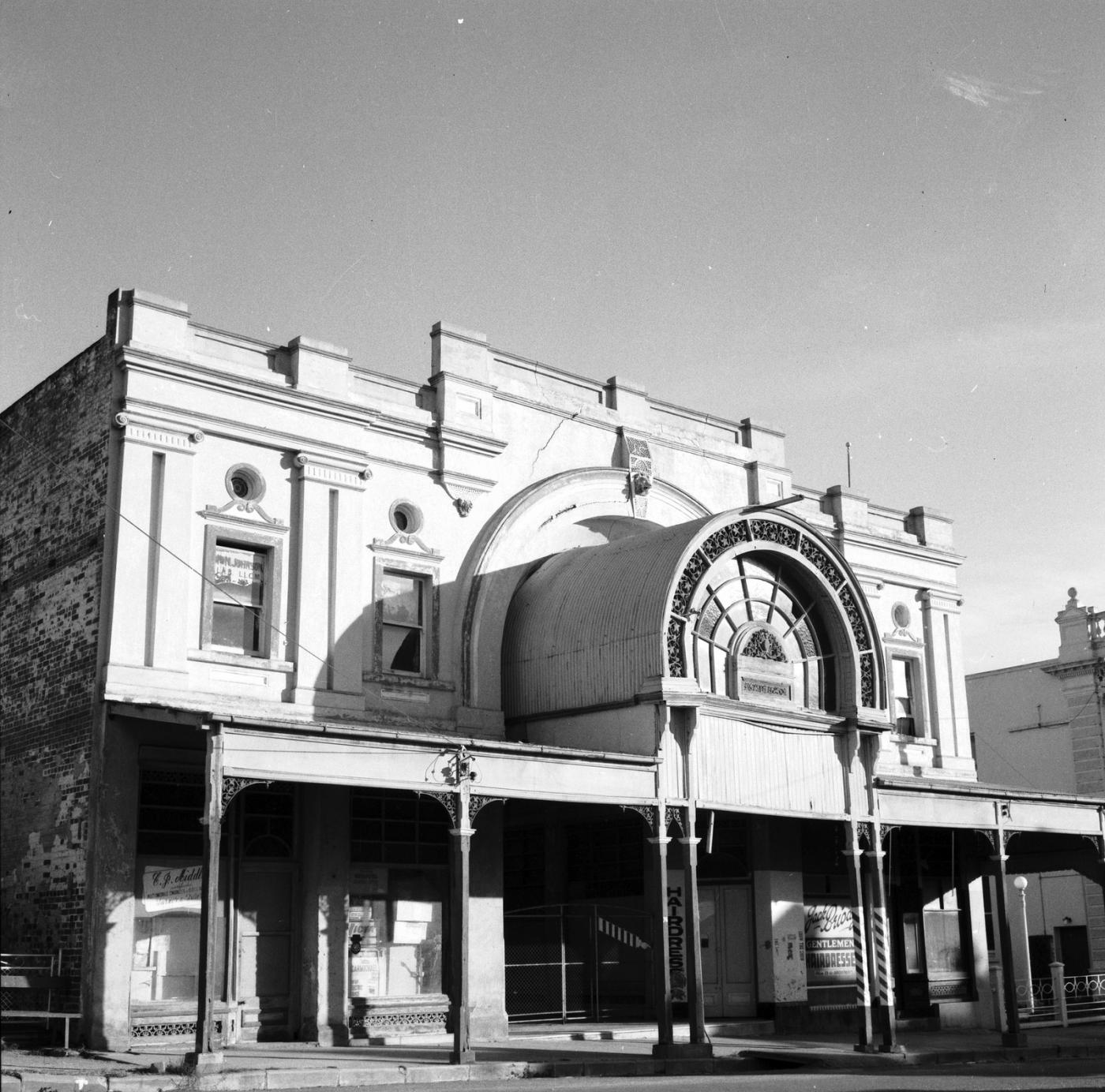
- News of the Day
-
Gympie Times and Mary River Mining Gazette, Tuesday 16 February 1892, page 3
The Miners' Stock Exchange, Charters Towers.
The outcome of a stormy meeting of this exchange, held lately, was that a motion to transfer the exchange to a private individual who would take over all the liabilities and assets of the institution, was defeated, and an amendment that tenders be called for the goodwill, lease, scrip, office furniture, etc, of the Exchange was carried.
The following article from the Northern Mining Register gives a suggestive insight as the cause of the Exchange's downfall:— When the Charters Towers Miners Stock Exchange commenced its operations it was not proposed to deal in shares, but the exigencies of the situation seems to have forced the committee into that position. On the facts now before the public it seems the institution was wrecked by the incapacity of its officials.
It was shocking bad business to accept a cheque for over £300 from a man whose previous cheque to the Exchange had that very day been dishonoured, but it was infinitely worse to permit of an accumulation of shares in the office, which buyers had neglected to call for, but for which, alas though the Exchange had paid the sellers. It is now understood that the Exchange was the victim of a series of conspiracies to defraud, yet, after being once, twice, and thrice bitten, the officials were never shy. The only wonder is that the Exchange got off so easily. Some astute sellers offered shares at the call and found buyers at full market or above rates; next morning the seller got his cheque from the Exchange, which received his shares. The buyers, either men of straw who feared not a civil action, or operating under a name borrowed for the occasion, never appeared. The operation was simple, and to judge from the shares held by the Exchange, often repeated.
When they look back on the free, easy and accessible manner in which they dipped their hands into the Exchange coffers, the conspirators must feel disposed to assert that, like Clive, they are astonished at their own moderation. To use a sporting term the 'buyers' had it 'all to nothing' for if shares went up they could call round and obtain possession of them. According to the report, all that is left of the £1000 received for subscriptions and the commission received on a portion of the sales, totalling over £30,000, is about £400, and that only, if the shares now held realise the prices at which the committee value them. No wonder the meeting was stormy, almost cyclonic, and that the strong current of opinion amongst the members raised a flood of talk, which drowned the chairman's urgent appeals for order. Ill luck still pursues the Exchange, for a heavy parcel of Alabamas which they hold, were forfeited a clay or two ago. These, however, can be repurchased, and the only cost will be the calls due, and the expenses of sale.
- Background
-
The Stock Exchange Arcade was built in 1888 to the design of Sydney architect, Mark Cooper Day for Alexander Malcolm as a shop and office arcade and named the Royal Arcade. In 1890 the Stock Exchange took up its offices in the arcade which became the focus of gold-mining investment during the peak period of Queensland's most important goldfield.
Gold was discovered at the site of Charters Towers in late 1871 by a prospecting party composed of Hugh Mosman, George Clark, James Fraser and an Aboriginal boy called Jupiter who worked for Mosman. By early 1872 a rush was in progress with an estimated 4,500 on the field by the end of the year.
In 1874, following goldfield regulations, a business area was marked out in an area believed to be non-auriferous. In 1877 when Charters Towers petitioned for incorporation as a municipality, this business area was defined as covering one square mile, measured as a half mile in each compass direction from the intersection of Gill and Mosman Streets. This area was the key business and social centre of the town.
The economics of Charters Towers were closely bound up with the geology of the field. The gold was not alluvial, but in the form of reefs of gold-bearing ore. This meant that equipment to extract it and to dig shafts was needed from the start. There were several major reefs and they sloped downwards with loops and branches. The ore near the surface was extracted first. Later, deeper and deeper shafts were necessary to find and extract the gold. At first, small syndicates of miners, crushing mills and local business men financed the mines. As the lodes ran deeper, more capital was needed to exploit them than was available locally.
In 1885 several Mining Agents formed themselves into a Mining Exchange. This made speculation through the buying and selling of mine shares possible. In 1886, a display featuring ore samples from the Charters Towers mines was set up at the Colonial and Indian Exhibition in London. At the time, some mines were producing extraordinary quantities of gold. The response from British investors resulted in a speculation boom. This did not hold, collapsing in 1888, but as the fabled Brilliant Reef was discovered in the following year, the fortunes of the field were not depressed for long.
The boom had encouraged a number of local businessmen to replace their timber buildings with more substantial brick structures. Alexander Malcolm, who had been on the field since the early 1870s was one of these, replacing his 'Malcolm's Buildings' in Mosman Streets with an elegant arcade of shops and offices. The arcade was designed for him by Sydney architect Mark Cooper Day and was named the Royal Arcade.
In 1890 the Stock Exchange reformed along better organised lines and looked for new premises. The Royal Arcade was a wise choice, being centrally placed in the main business area and close to agents and banks. The Exchange signed an initial three year lease for the use of an office and the courtyard for their evening call at a rent of ten pounds a month. To begin with, two calls a day were made, one at noon and another, open to the public, in the evening. Public interest was such that this evening call was attended by crowds.
In 1892 the introduction of the McArthur-Forrest cyanide process boosted gold production for the field which peaked in 1899 at 319,572 ounces. The population also peaked in this year at around 26,500. Charters Towers was now the second most important city in Queensland and an internationally noted goldfield.
After 1899, the yield of Charters Towers mines gradually diminished and increasing costs, due to the great depths at which gold was being mined, saw the return to investors falling. In 1912 the Warden reported that the extreme depth for profitable mining had been reached. The population fell sharply, as many people moved to coastal towns. In 1916, with little interest in new ventures from investors, the stock exchange closed.
Falling real estates values and vacant buildings allowed a number of private schools to establish themselves, providing a new economic life for Charters Towers as an educational centre. Lack of pressure for expansion and development in Charters Towers meant that many of the buildings dating from the period when it was a world famous goldfield survived remarkably intact. However, the arcade was too large and grand for the reduced population and the type of business that they supported. The cost of maintenance eventually exceeded income from the building and it fell into disrepair.
In 1971 it was acquired by the Charters Towers City Council as trustee for the Charters Towers and Dalrymple Historical Society. It was restored in conjunction with the National Trust of Queensland and when a National Trust Branch was formed in Charters Towers, ownership of the arcade was transferred to the National Trust. Stage One of the conservation which repaired the section facing the street was completed in 1972 and Stage Two which conserved the rest of the building in 1975.
The building is now used for offices and shops. The art gallery which occupies the upper floor is named for Don Roderick. This architect, who has strong associations with Charters Towers, worked on a voluntary basis with the builder, Bob Aitken, to carry out the urgent work which saved the building and made it usable again.
Courtesy of the Queensland Heritage Register.
Additional images
/146.2570006,-20.0760353,7/450x450@2x.png?access_token=pk.eyJ1IjoicXNhLWRpc2NvLXFsZCIsImEiOiJjamJmdTgyZXEyeWNjMnlxZm8xcmtieHgxIn0.lmT9J5tTPKGuuccQgCVSAg)

